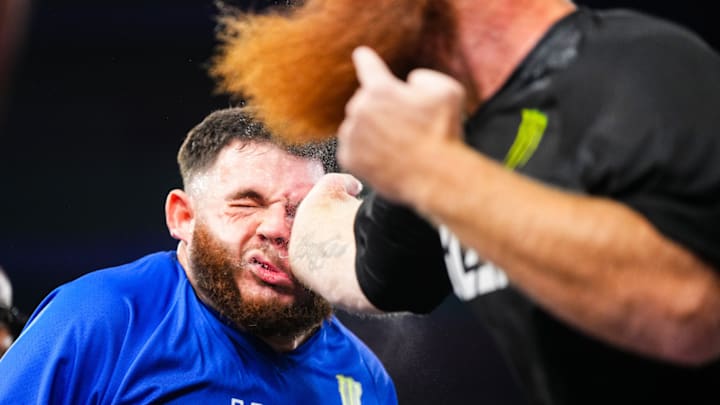The UFC revolutionized the world of combat sports when it burst onto the scene in 1993. UFC president Dana White is looking to change the face of combat sports again with the creation of Power Slap, a slap-fighting league that has competitors stand across from each other, trading slaps over the course of multiple rounds until a decision can be met, or a competitor is not able to continue. This week, the second season of Power Slap’s reality show Power Slap: Road to the Title is airing on Rumble, featuring 28 competitors across five weight classes. Ahead of the show’s return, here is a closer look at the rule set of the Power Slap fighting league.
How long is a Power Slap match?
Power Slap matches are contested between two, unarmed participants. Power Slap matches are limited to three rounds for regular matches and five rounds for title matches. Participants are allowed to have one coach in their corner, to give them advice throughout the match and wipe chalk off their face with a towel.
Who slaps first in a Power Slap match?
Who slaps first in a Power Slap match is decided by a coin flip which is done earlier in the week, and participants must announce what hand they are slapping with and how many wind-ups they are going to take before they strike. Participants are allowed a maximum of three wind-ups before they must throw their slap. From the start of the round, participants are given 60 seconds to measure and throw their slap, and after being slapped, competitors have 60 seconds to recover. If a participant is unable to recover in time, the fight is declared a knockout. The rounds are scored on a 10-point must system, and if both competitors are still able to continue after the rounds are over, the judges scorecards are used to determine a winner.
What equipment is needed for Power Slap?
Participants must wear a mouth guard and inner ear protectors during a match and are not allowed to wear any jewelry on their head, neck, arms, or fingers, as well as any ear or facial piercings. Any hand wrappings or hand taping is also not allowed. Headgear and hats are also not permitted in a Power Slap match. Chalk is provided to participants and is used to indicate where their strikes have landed on their opponent after they have thrown their slap. A competitor's hair must also be tied up behind their head so as to not obstruct an incoming slap from their opponent.
Is there illegal strikes in Power Slap?
To be considered legal blows, slaps must meet a certain criteria. Slaps must be open handed and are not to be led with the palm - meaning all parts of the hand must contact the opponents face at the same time. Failure to do this may result in a clubbing foul being called on the striker, with the possibility of a points deduction. As a slap is thrown, the striker’s feet must be firmly planted with their heels on the ground, inside the designated area. If a participant’s heels or feet are to leave the ground while striking, this is a stepping foul and can also result in points being deducted. Participants can also receive fouls when receiving a slap. If the receiver of the slap moves their shoulders to protect their face or drops their chin, they will receive a foul for flinching, which may also result in points being deducted.
What are the Power Slap weight classes?
In Power Slap, there are currently five male weight classes that mimic the weight classes of MMA. There is welterweight, middleweight, light heavyweight, heavyweight and super heavyweight. For female competitors, the only weight class showcased has been featherweight, however more female weight classes may be added in the future.
